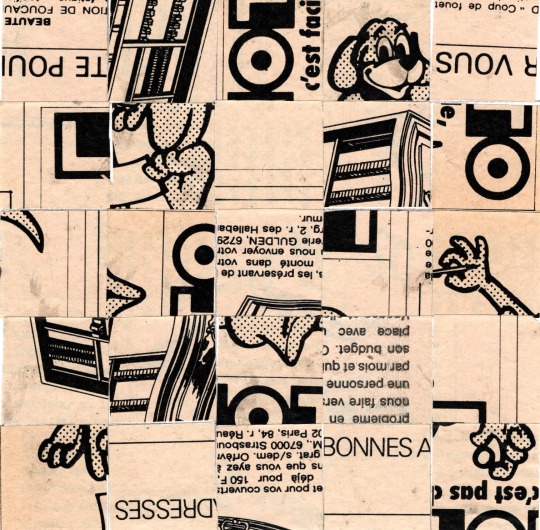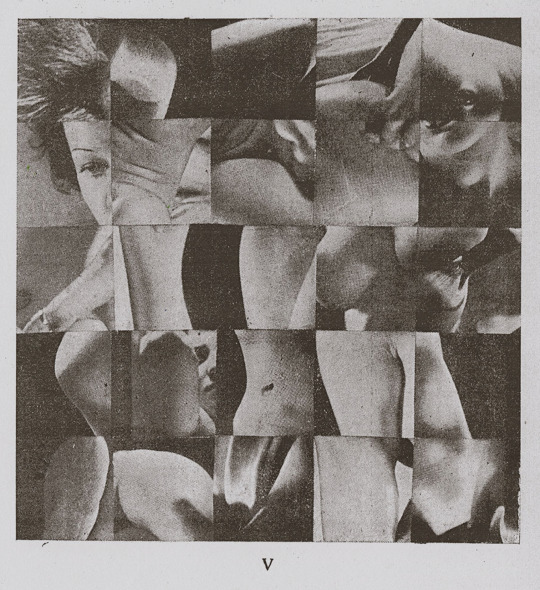#Cubomania
Explore tagged Tumblr posts
Text

Untitled Cubomania
Paper collage
16cm x 19cm
16 notes
·
View notes
Text

Gherasim Luca - Collage
#gherasimluca#cubomanias#surrealillustration#collage art#artecontemporáneo#conceptualismo#poesia#deconstrucción
3 notes
·
View notes
Text

Gherasim LUCA (Bucharest, 1913 - Paris, 1994)
Madeleine, undated, autograph manuscript, images cut from magazines with autograph poem, ms 860
Of Romanian origin, Gherasim Luca established close ties with French artistic circles in the early 1930s, most notably with the Surrealist group, before settling permanently in France in 1953.
Described by Gilles Deleuze as "the greatest poet of the French language", Luca developed a work of "limit-hero", to use the title of one of his works (1953), where the deconstruction of language is based on the refusal of political, identity or ethical categories and the recourse, twenty-five years before Deleuze and Félix Guattari, to the notion of anti-Œdipe. His atypical path, where the creative process is inseparable from his personal life, naturally led him to transpose his poetic experiments into the visual arts. In particular, from 1945 onwards, Luca began a series of collages - in which this autograph manuscript is included - made from photographs of various illustrations or, more importantly, reproductions of paintings, cut into squares of equal dimensions. Luca then glued these squares side by side to form a new, original and surprising image, following a process deeply inspired by the Surrealists. He gave these works the name "cubomania", a way of recalling the founding role of the square shape but also probably a way of mocking the heirs of cubism. Beyond the influence of the Surrealists and Marcel Duchamp's scandalous L.H.O.Q. (Musée National d'Art Moderne, Paris, 1919), Luca's "cubomanias" feature a personal dialogue with the most famous works of art of the past, from Leonardo da Vinci to the van Eyck brothers, Caravaggio and Ingres. This manuscript joins one of them acquired in 2019, Madonna of the Bourmestre Meyer (after Holbein).
82 notes
·
View notes
Text
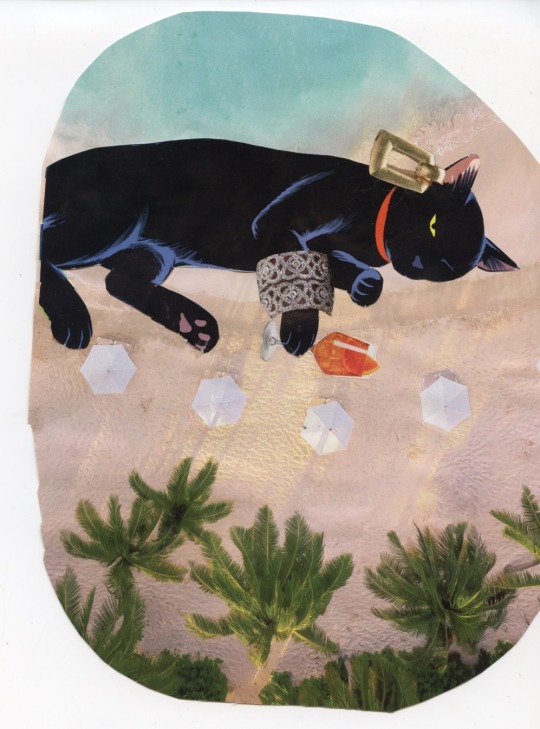
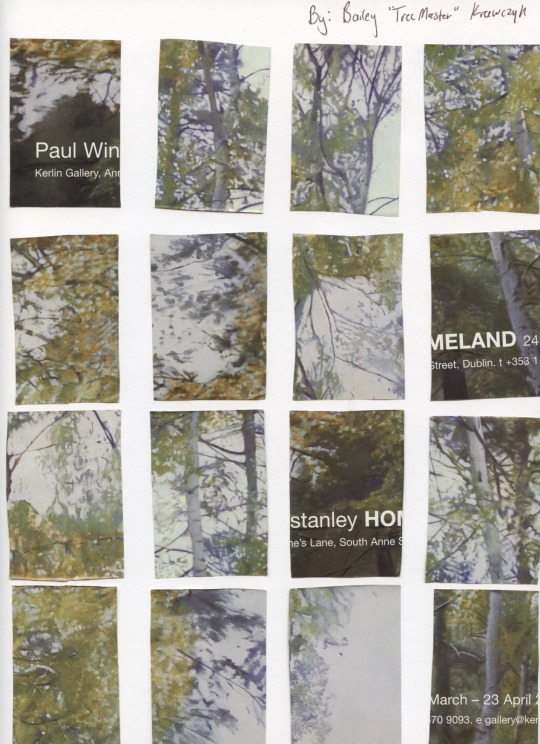
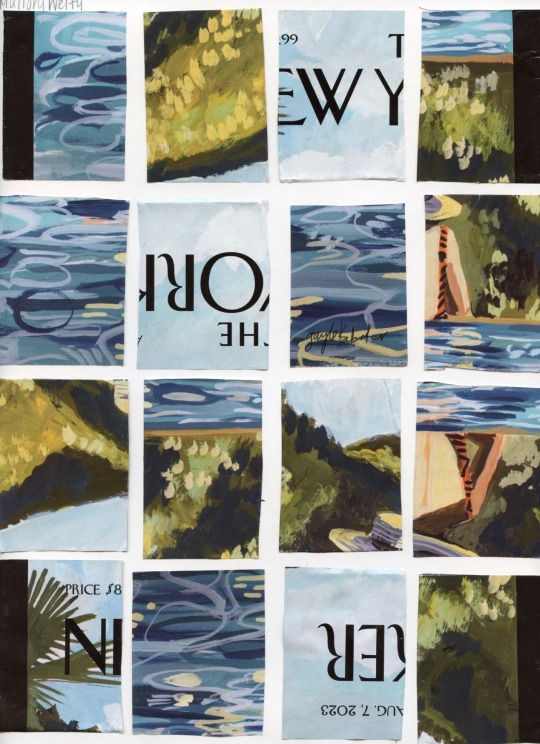
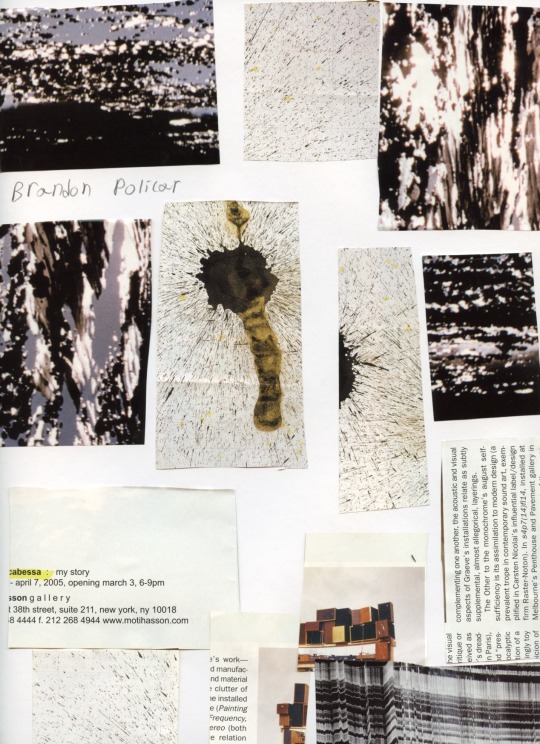
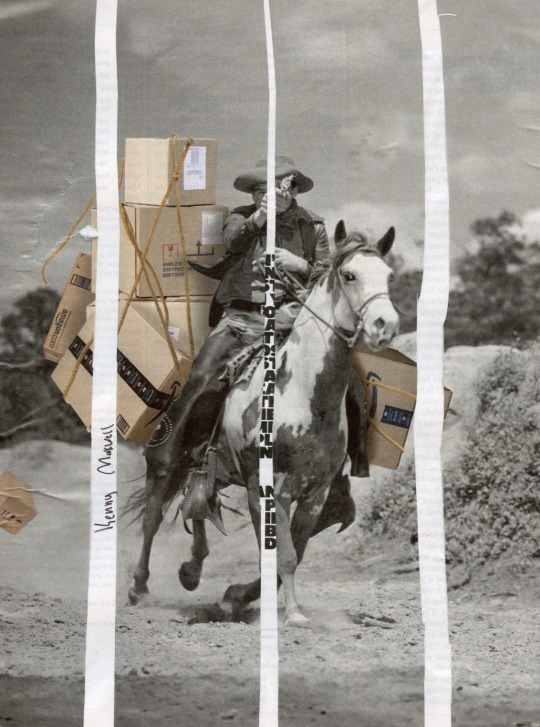
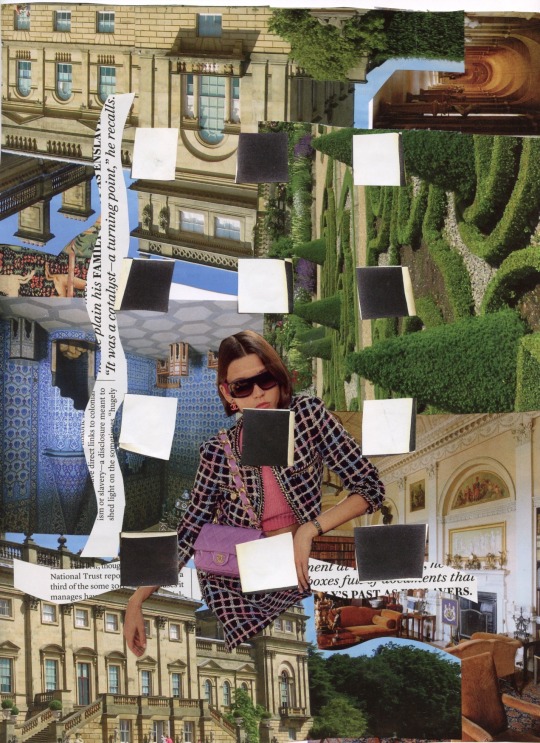
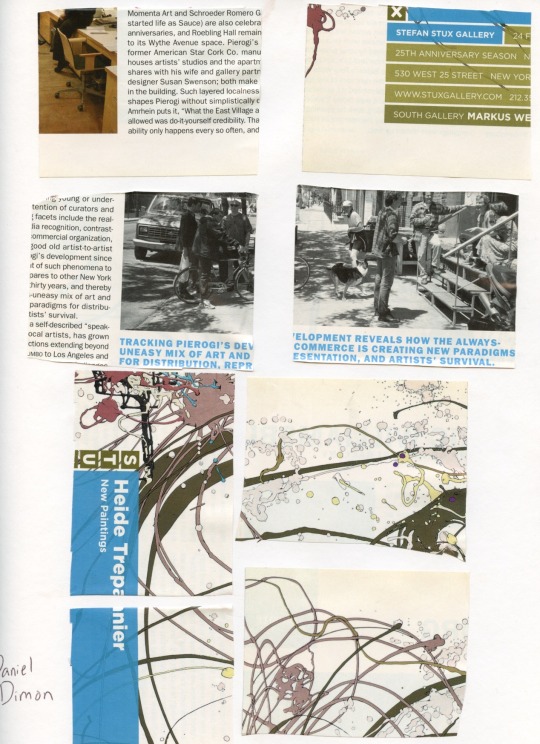
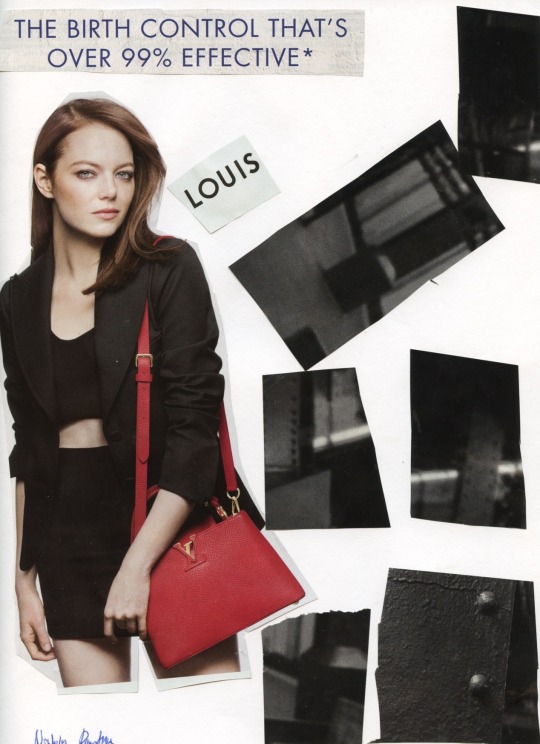
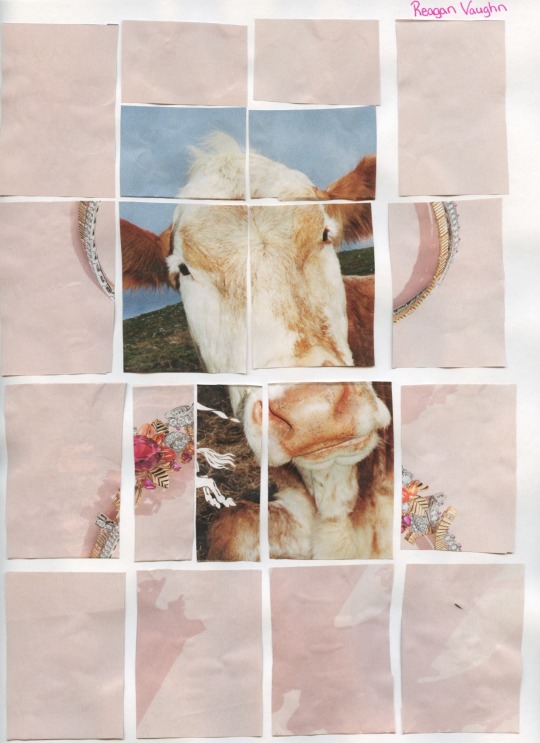
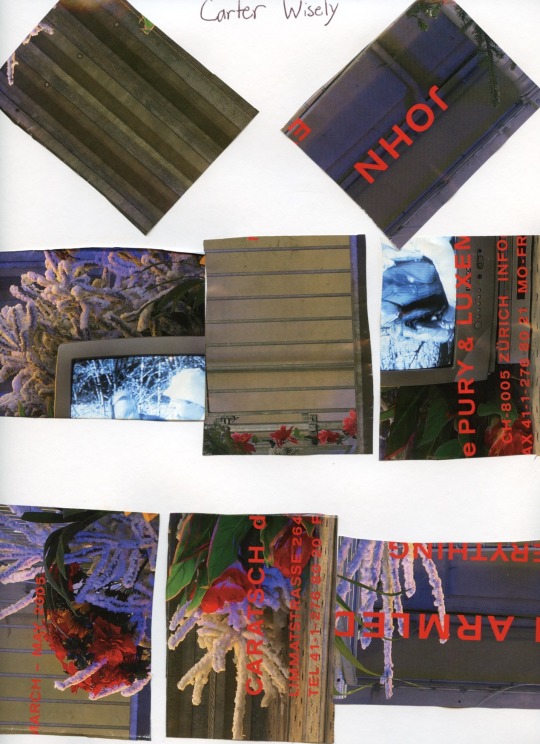
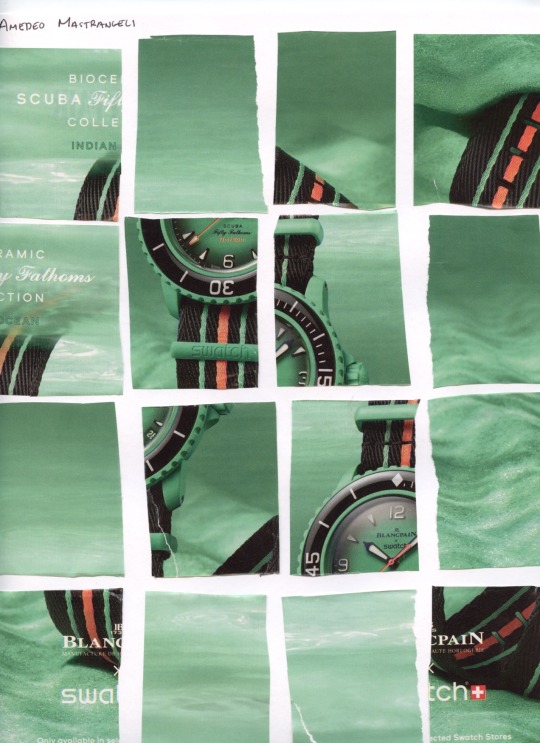
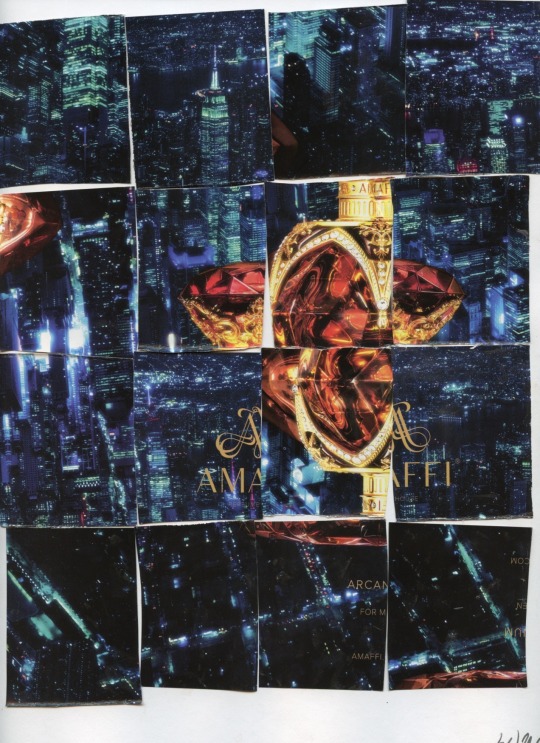
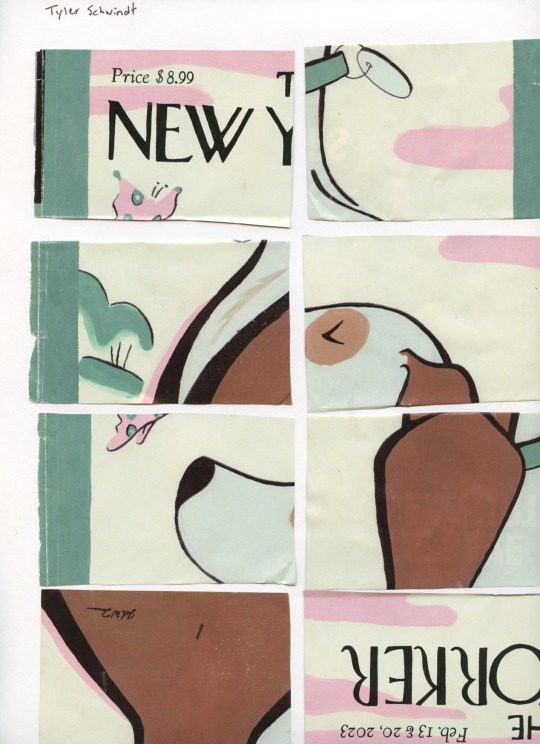

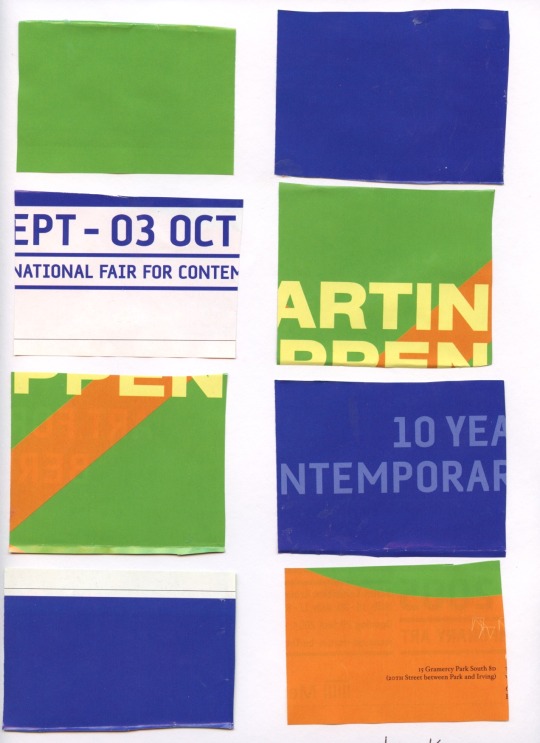
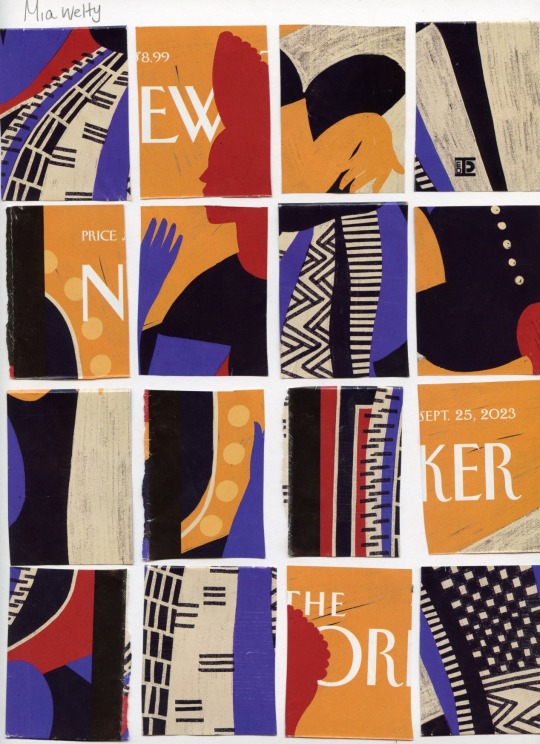
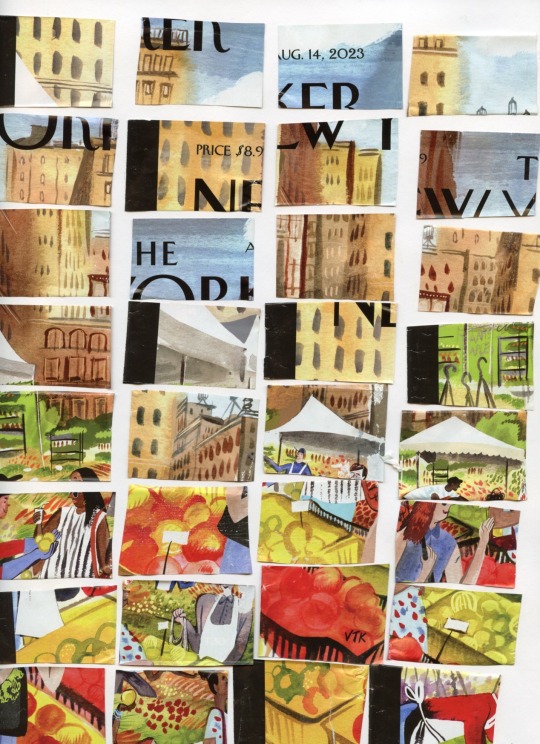


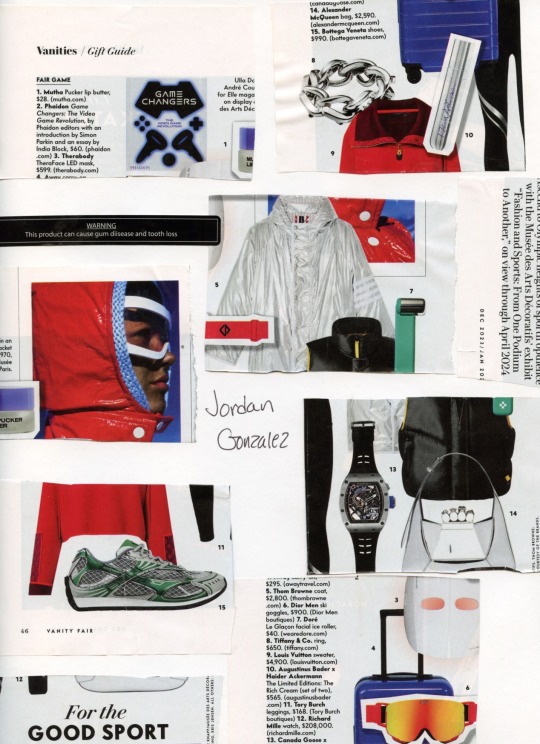


We will create a collage in class using the Surrealist method CUBOMANIA: an image is cut into squares, then reassembled automatically. with intention, or at random, to form a new composition. Random organization introduces the element of chance into our composition.
The process:
Choose a pre-existing image: magazine cover, magazine page, or photo (or YOUR OWN drawing)
Fold in half; fold in half again and again to provide lines for cutting the cube shapes.
Cut "cube"shapes using the fold lines as a guide. Arrange them first by laying out the image as you found it, but allow for a small space between pieces. Next, try moving pieces; turn some upside down. Randomly choosing pieces is a surrealist technique that encourages us to make connections even when an image is disrupted by cutting and rearranging. This kind of selection is an "aleatoric" (depending on the throw of a dice or on chance; random) strategy used in composition.
Once you are satisfied, glue the cubes down. Write your name on the art work to identify it. We will walk around to view and discuss all collages.
0 notes
Photo
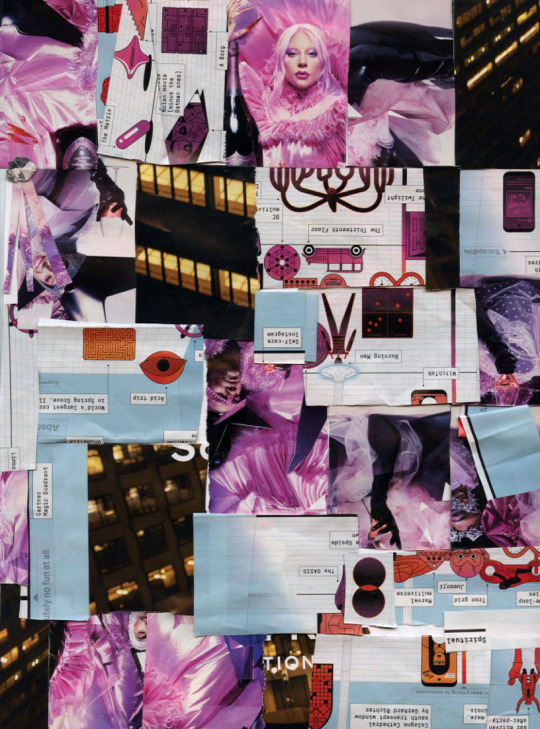
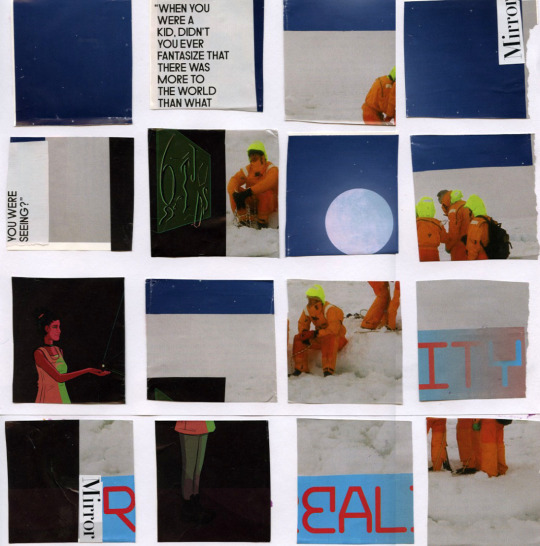
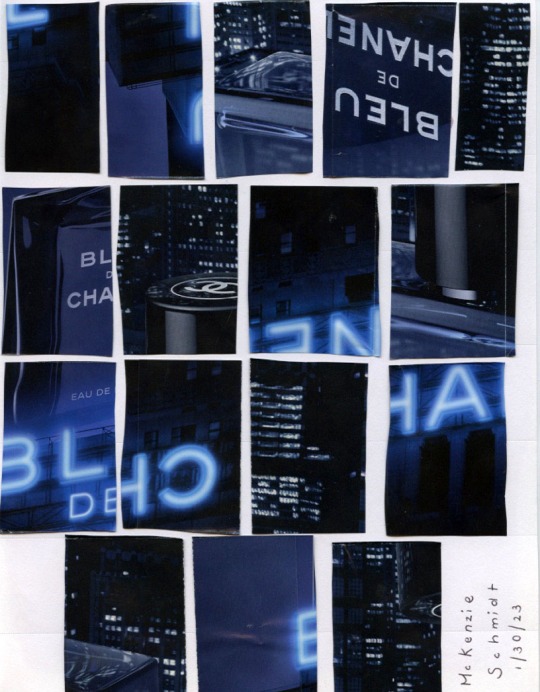
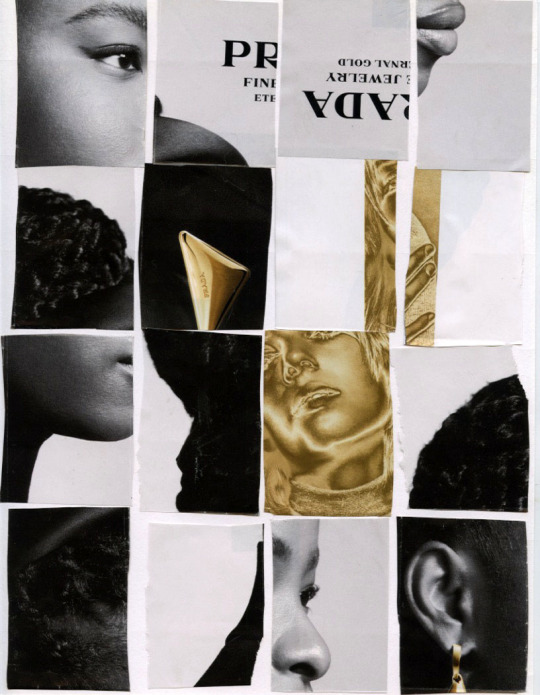
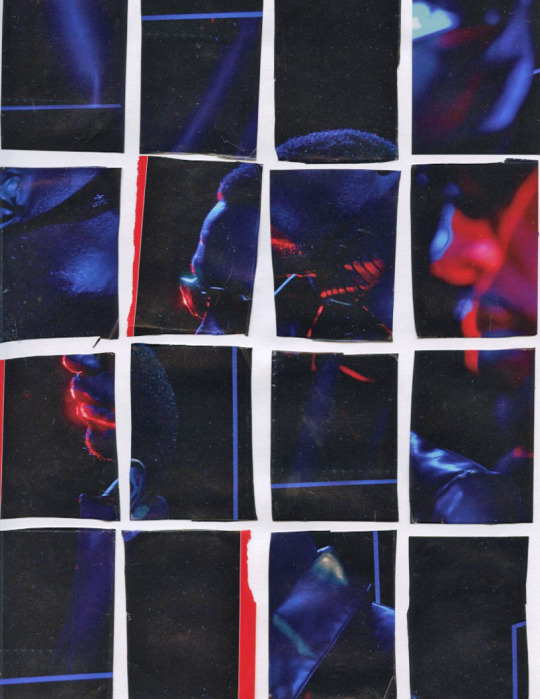
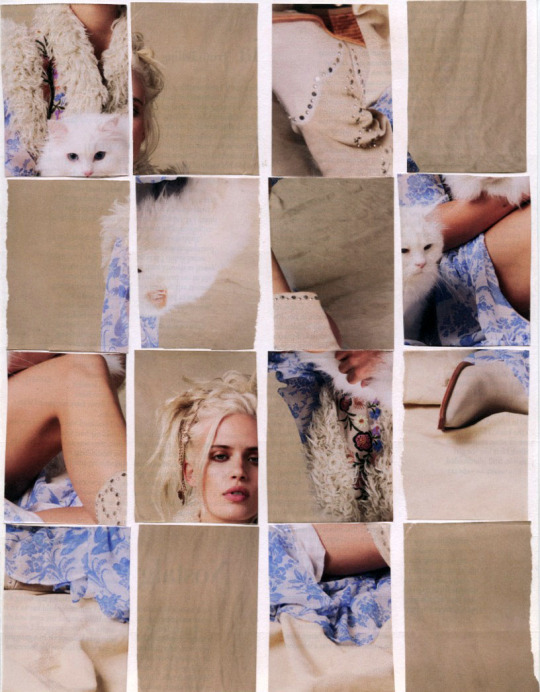
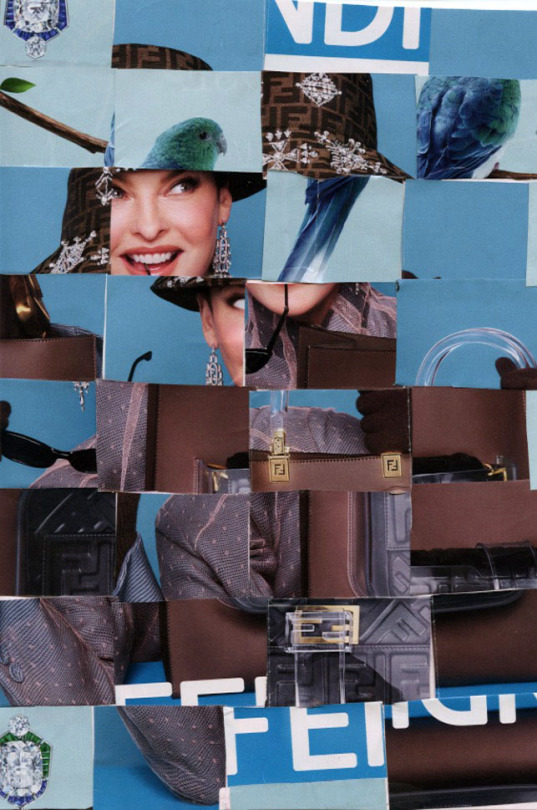
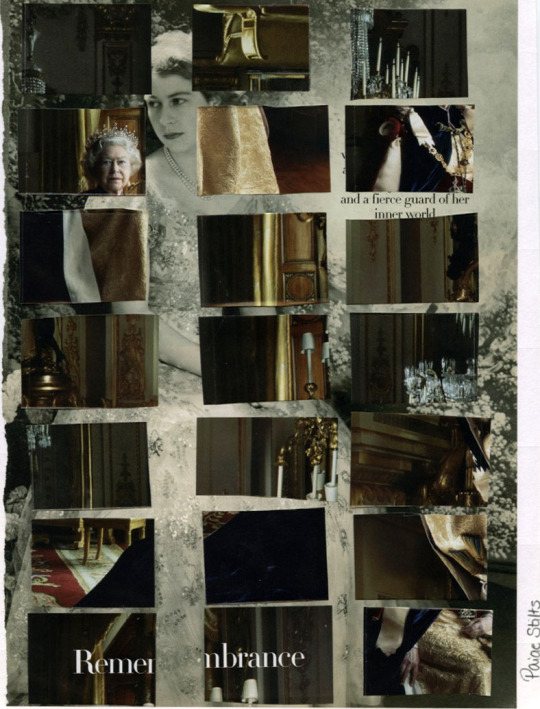
We are now familiar with Wangechi Mutu and Martha Rosler who incorporate pre-existing images and reproductions in their collages.
Collage can question the notions of traditional authorship by isolating, reframing, recycling, regurgitating, and reproducing ideas and images that are not originally our own. The method we used is called Cubomania, a surrealistic style invented by Romanian artist Gherasim Luca.
0 notes
Photo
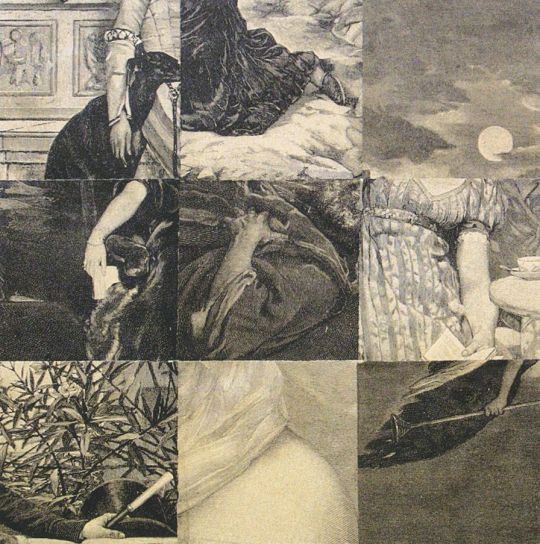
Gherasim Luca. Experiment With a Squared Stick Above Two Glasses, 1944.
122 notes
·
View notes
Text

11 notes
·
View notes
Photo
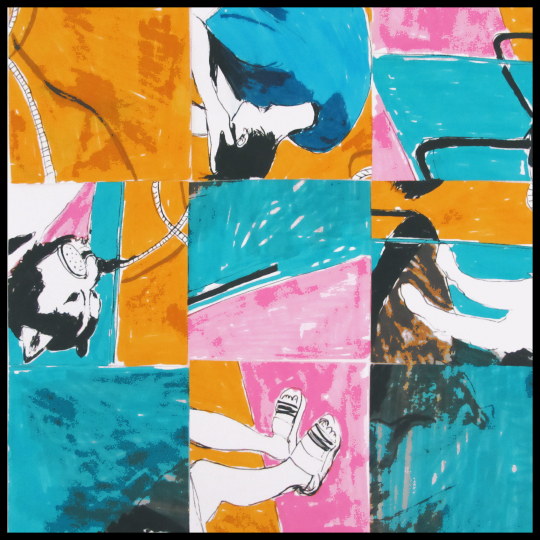


By subverting and cutting the image, Luca believed that you become less precious about the original. (from Sam Piyasena and Beverly Pilp’s book “Just Draw It”)
The exercise reminds me of the “Three of swords” reversed: there comes a time when others misinterpreting your moves no longer concerns you. Deeply rooted in purpose you’ll see how it’s all just noise. Explain nothing. You know your heart’s mission.
collage by J.J.
#artists on tumblr#artist's studio#art and design#drawing exercise#cubomania#just draw it#sam piyasena#beverly philp
0 notes
Photo
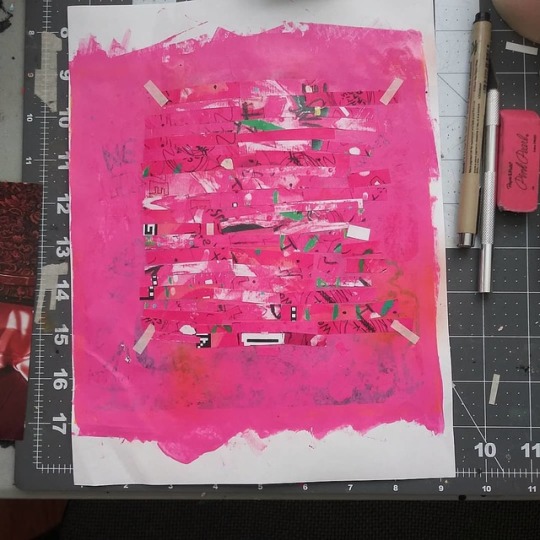
Backgrounds. Cut paper and acrylic. I do most of my work by hand. 🔪🔪✂️ #cuttychopra . . . . . #Cubomania #dadasoulface #backgrounds #color #acrylic paint #cutpaperart #cutpaper (at Aurora, Illinois) https://www.instagram.com/p/B137IPwhapn/?igshid=1gkmz45pdw4wy
0 notes
Photo
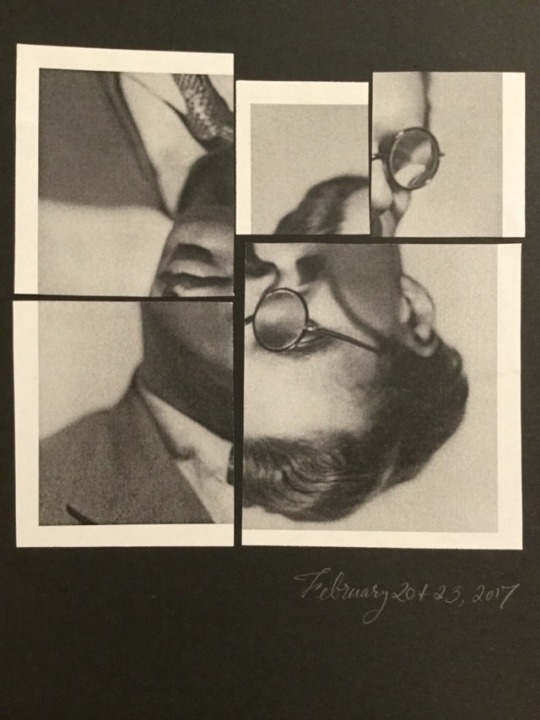
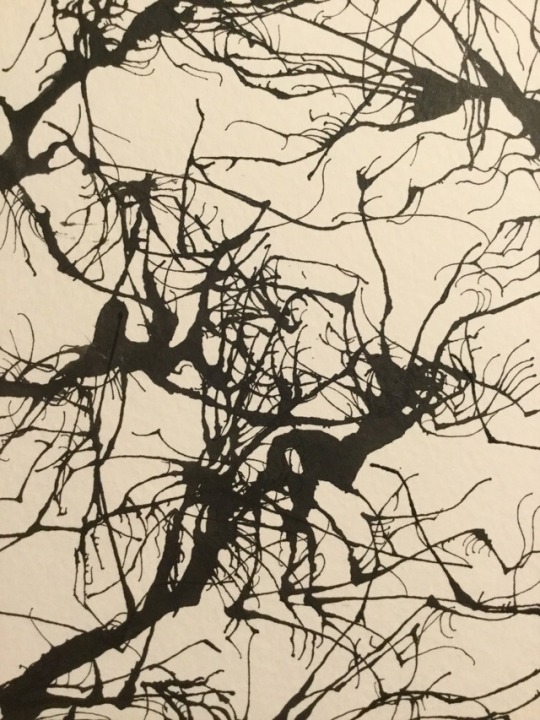
9 notes
·
View notes
Text
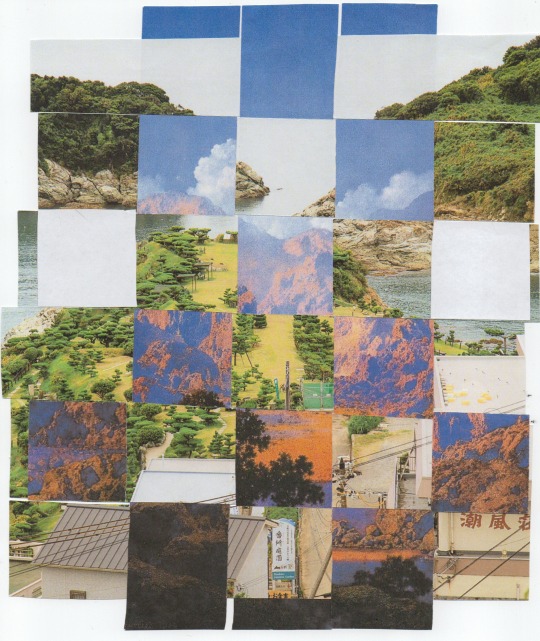
Maxfield visits Japan
20cm x 17cm, Cubomania and weaving
SOLD
20 notes
·
View notes
Photo
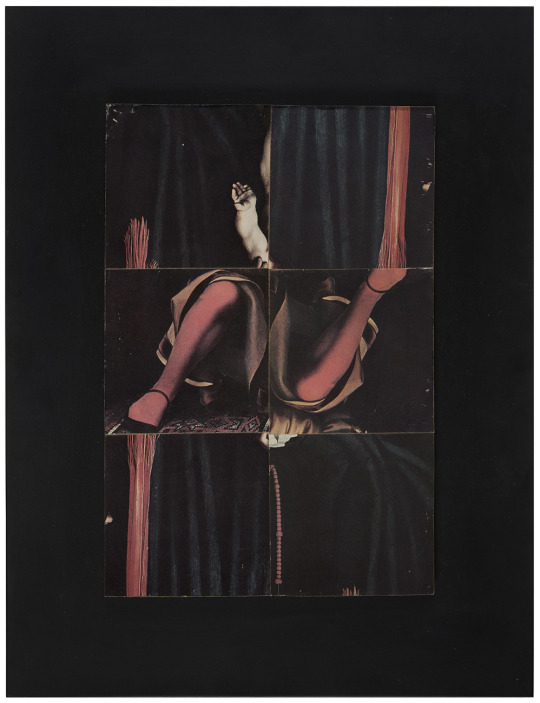
Gherasim Luca (1913–1994) | Cubomania entitled “Madone du Bourgmestre Meyer (d’après Holbein)”, 1983 Collage of photos on board, mounted on a wood panel, 34.5 x 26 cm ©Beaux-Arts, Paris
Originally from Romania, from the early 1930s Gherasim Luca (1913–1994) formed close links within the French art world, notably among the Surrealists; he settled permanently in France in 1953. Described by Gilles Deleuze as the “greatest poet in the French language,” Luca cultivated “hero-limit” work, to use the title of one of his pieces (“héros-limite,” 1953), where the deconstruction of language is based on the rejection of political, identity, and ethical categories, and reliance—twenty-five years before Deleuze and Félix Guattari—on anti-Oedipal notions. His atypical path, with the creative process is inseparable from his personal life, naturally led him to transcribe his poetic experiments into the visual arts. In addition, particularly from 1945, Luca embarked on a series of collages made from various photos of illustrations, and more significantly, reproductions of paintings, cut into squares of equal dimensions. He glued these squares side by side to form new, original, and surprising images, following a process very much inspired by the Surrealists. He called these works “cubomania,” to invoke the square’s foundational role, but possibly also as a way to mock the heirs of Cubism.
Beyond the Surrealists’ influence and that of the scandalous L.H.O.O.Q by Marcel Duchamp (1919, Musée National d’Art Moderne, Paris), Luca’s “cubomanias” of Luca staged a personal dialogue with celebrated works of art history, from Leonardo da Vinci to the Van Eyck brothers, Caravaggio to Ingres. In this work, Gherasim Luca’s point of departure is one of the best-known paintings by Hans Holbein, the Darmstadt Madonna (1527), also known as Madonna of the Lord Mayor Jacob Meyer zum Hasen, now held privately and shown in Schwäbisch Hall, but which at the time was on display in the Schlossmuseum Darmstadt. In this work Luca made particularly masterful use of the reproduction and the cropping techniques that make his cubomanias so original, using the leg of the patron’s son twice with different cut-outs, as well as the Virgin’s red belt three times. Recomposed in this way, right-side up or upside down, these figurative details take on a profoundly abstract character, reinforced by the opposition between black and red, in addition to the new continuities that Luca proposes through the association of elements that are identical in size and color. Additionally, the forms extend into the black of the support, suggesting the unfinished nature of the work, to be continued in the viewer’s imagination. Investigations into Luca’s “cubomanias” has particular resonance with the work of Holbein, who is famous for harnessing the dreamlike power of deformation by placing an anamorphosis in the center of is most famous work, The Ambassadors (1533, National Gallery, London).
54 notes
·
View notes
Photo
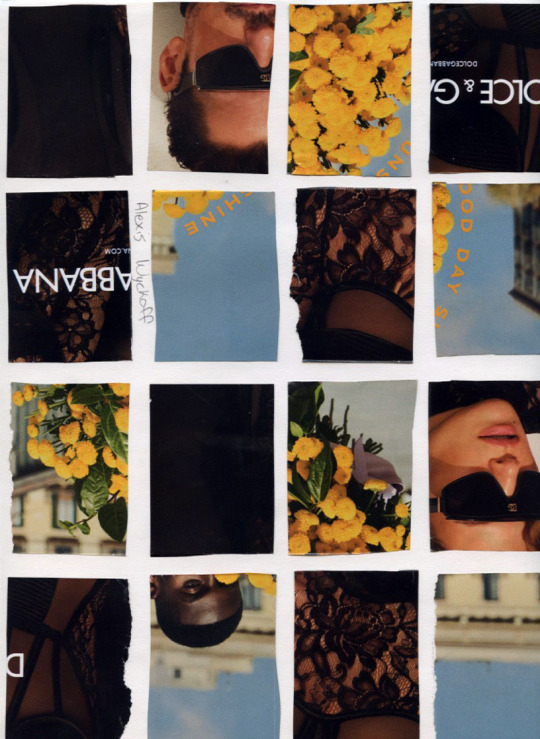

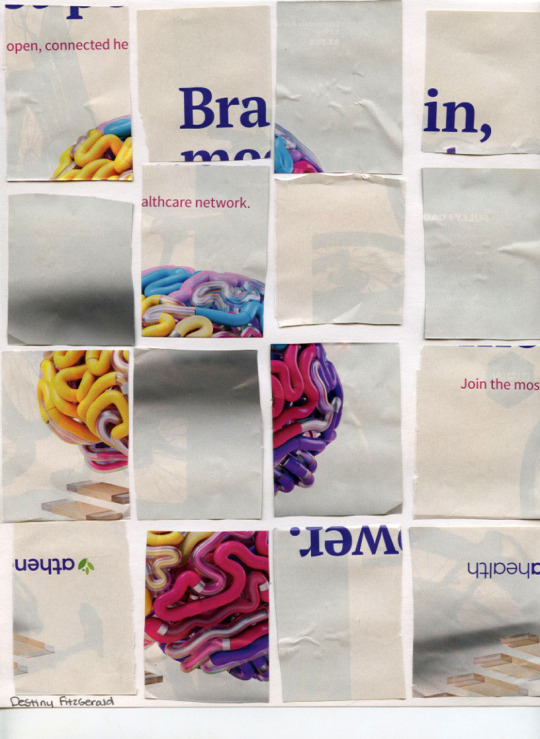
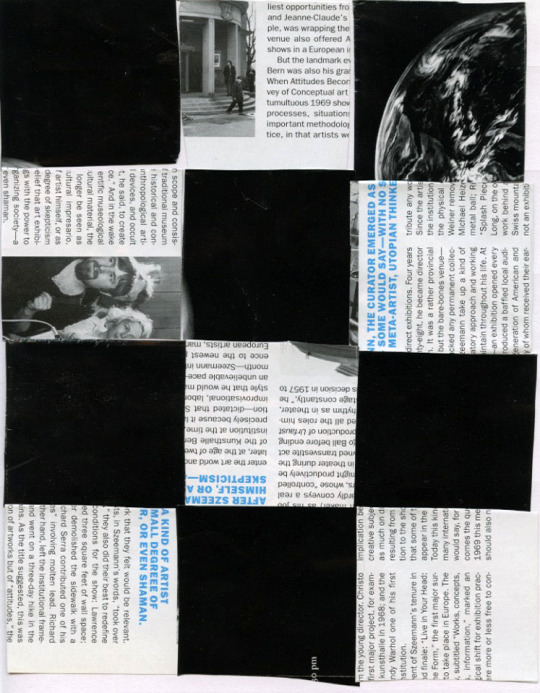
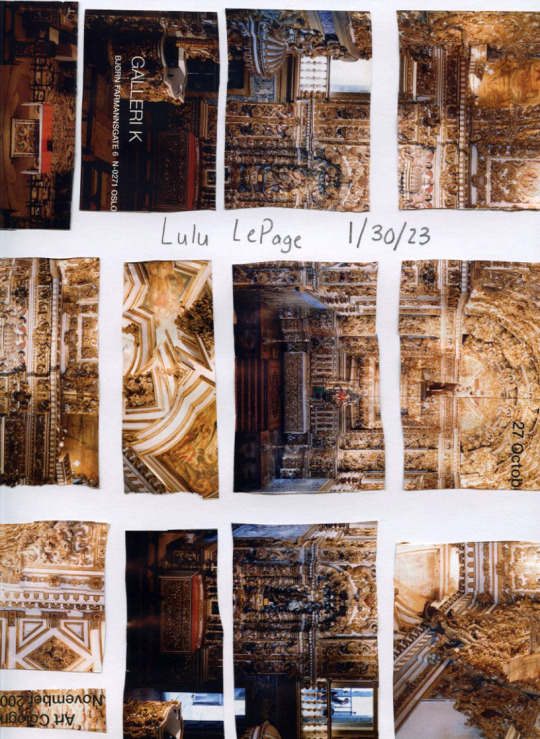
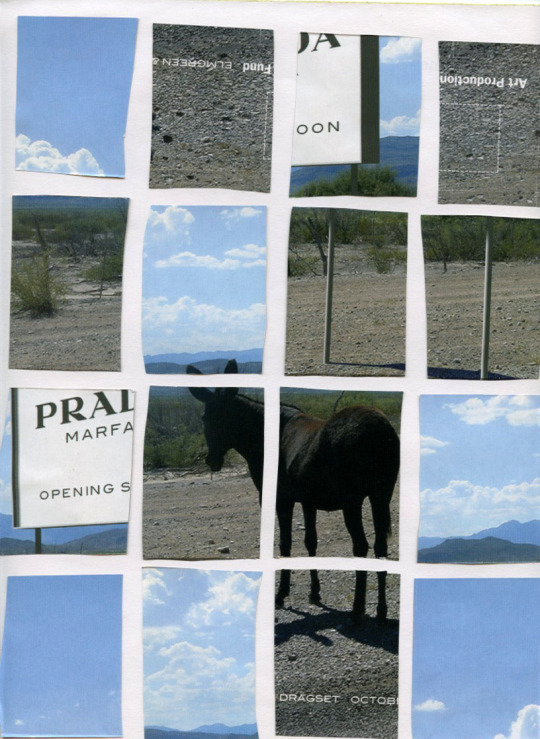
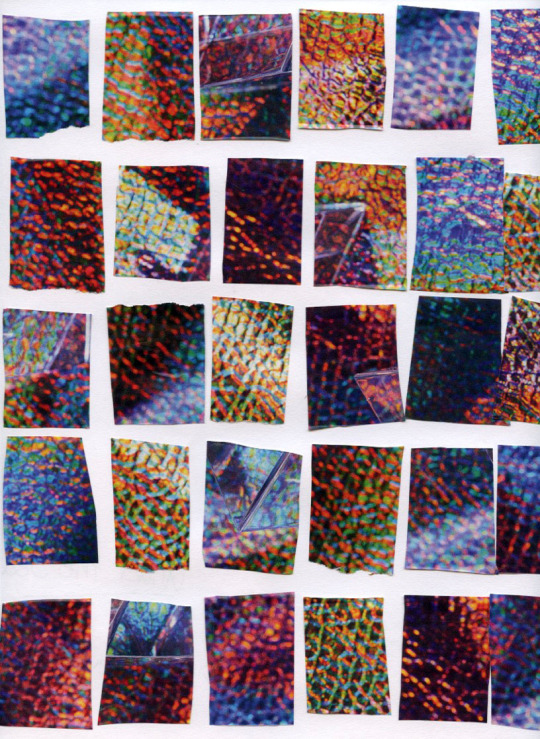
We are now familiar with Wangechi Mutu and Martha Rosler who incorporate pre-existing images and reproductions in their collages.
Collage can question the notions of traditional authorship by isolating, reframing, recycling, regurgitating, and reproducing ideas and images that are not originally our own. The method we used is called Cubomania, a surrealistic style invented by Romanian artist Gherasim Luca.
0 notes
